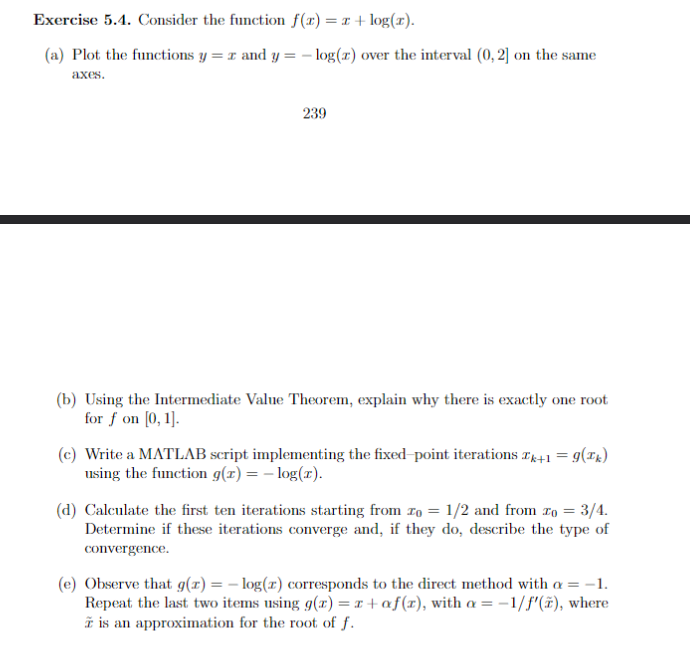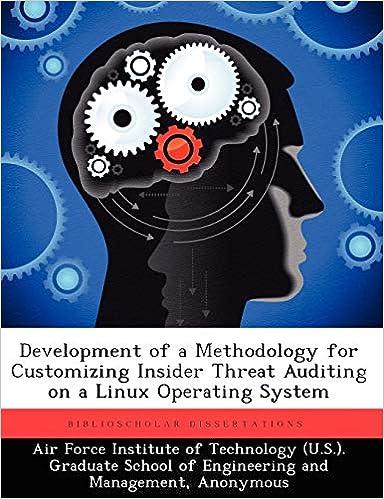Answered step by step
Verified Expert Solution
Question
1 Approved Answer
Question E only. Exercise 5.4. Consider the function f(x)=x+log(x). (a) Plot the functions y=x and y=log(x) over the interval (0,2] on the same axes. 239

Question E only.
Exercise 5.4. Consider the function f(x)=x+log(x). (a) Plot the functions y=x and y=log(x) over the interval (0,2] on the same axes. 239 (b) Using the Intermediate Value Theorem, explain why there is exactly one root for f on [0,1]. (c) Write a MATL AB script implementing the fixed-point iterations xk+1=g(xk) using the function g(x)=log(x). (d) Calculate the first ten iterations starting from x0=1/2 and from x0=3/4. Determine if these iterations converge and, if they do, describe the type of convergence. (e) Observe that g(x)=log(x) corresponds to the direct method with =1. Repeat the last two items using g(x)=x+f(x), with =1/f(x~), where x~ is an approximation for the root of f. Exercise 5.4. Consider the function f(x)=x+log(x). (a) Plot the functions y=x and y=log(x) over the interval (0,2] on the same axes. 239 (b) Using the Intermediate Value Theorem, explain why there is exactly one root for f on [0,1]. (c) Write a MATL AB script implementing the fixed-point iterations xk+1=g(xk) using the function g(x)=log(x). (d) Calculate the first ten iterations starting from x0=1/2 and from x0=3/4. Determine if these iterations converge and, if they do, describe the type of convergence. (e) Observe that g(x)=log(x) corresponds to the direct method with =1. Repeat the last two items using g(x)=x+f(x), with =1/f(x~), where x~ is an approximation for the root of fStep by Step Solution
There are 3 Steps involved in it
Step: 1

Get Instant Access to Expert-Tailored Solutions
See step-by-step solutions with expert insights and AI powered tools for academic success
Step: 2

Step: 3

Ace Your Homework with AI
Get the answers you need in no time with our AI-driven, step-by-step assistance
Get Started


